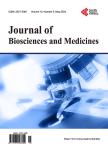Studies on Phytochemical Evaluation and Antibacterial Properties of Two Varieties of Kolanut (Cola nitida) in Nigeria
Studies on Phytochemical Evaluation and Antibacterial Properties of Two Varieties of Kolanut (Cola nitida) in Nigeria作者机构:Department of Biological Sciences Usmanu Danfodiyo University Sokoto Nigeria
出 版 物:《Journal of Biosciences and Medicines》 (生物科学与医学(英文))
年 卷 期:2014年第2卷第3期
页 面:37-42页
学科分类:1002[医学-临床医学] 100214[医学-肿瘤学] 10[医学]
主 题:Kola Nut. Phenol Zone of Inhibition and Odontopathogens
摘 要:Kola nut is a native stimulant which is commonly chewed in many West African cultures, individually or in a group setting. It is often used ceremonially and to honour guest. Phytochemical analysis and antibacterial screening of red and white Cola nitida (kola nut) extracts were evaluated using qualitative and quantitative method. Thin layer chromatography (TLC) was used to evaluate the phenolic content. Antibacterial screening was done using agar well diffusion method against odontopathogens;(Lactobacillus sp., Corynebacterium haemolyticum, Proteus vulgans, Bacillus lentus, Streptococcus anginosus and Pseudomonas aeruginosa) obtained from stock cultures. Phytochemical screening revealed the presence of alkaloids, flavonoids, saponin, tannins, glycoside, steroids, volatile oil and balsams. Higher content of alkaloids, saponin and glycoside was obtained in the aqueous extract than the methanol for both red and white kola nut. The results of TLC analysis revealed the presence of quercetin and coumarin in red kola and keamferol and coumarin in white kola respectively. The result of antibacterial activity of red C. nitida showed a zone of inhibition of 18 mm and 23 mm at 60 mg/ml for aqueous extract on Proteus vulgans and Streptococcus anginosus. Similarly white kola inhibited the growth of S. anginosus at 90 mg/ml with a zone of 18 mm. Methanol extract of red kola inhibited the growth of P. vulgans and S. anginosus at 60 mg/ml with a zone of 16 mm and 20 mm respectively. Acetone and ethyl acetate extracts of both red and white kola nut did not show any activity against the tested organism at all concentrations. The results obtained indicate that C. nitida which posses promising chemotherapeutic and antibacterial potentials respectively that could be useful against odontopathogens. The study may serve as baseline for further studies.



